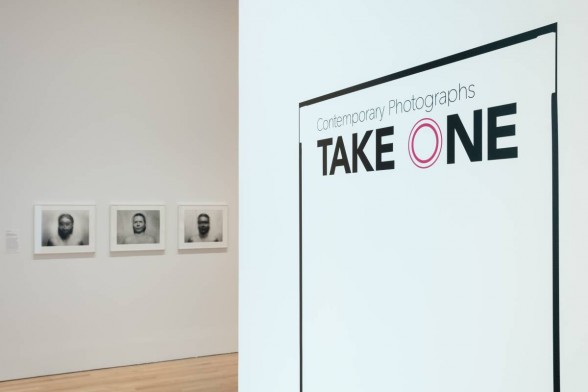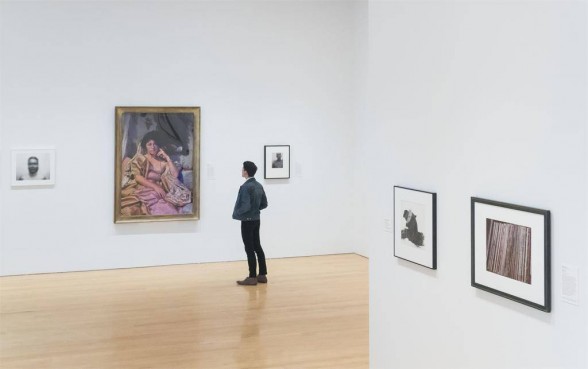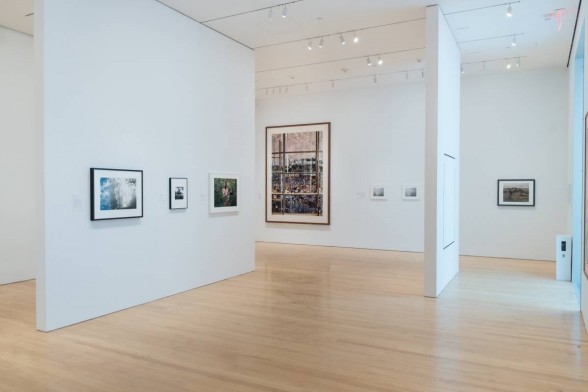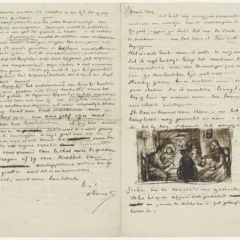[New Artblog contributor Tina Plokarz reviews a show installed not by chronology, but contrast and chromaticity. Take One is the first part of a two-part series at the PMA this summer. — the Artblog editors]
“Take one”–this phrase seems like an evocative command at the start of a photo show. The words, framed in a blank photo negative at the show’s entrance, immediately provoke a flood of pictures in my head and initiate a nearly overwhelming circulation of images.
Provocative portraits

Take One: Contemporary Photographs is the first of a two-part exposition of works from the PMA’s collection. The group exhibit presents photographs of 26 mostly American and European artists from the 1970s to the present and installs them in a linear display that alternates pieces by scale, technique, and chromaticity, which results in remarkable contrasts. Curated by Nathaniel Stein and Peter Barberie, Take One offers insights into photography’s relationship to new technologies, modern society and human relationships. The show stages human activities as a drama of the self and raises–in intimate pictures, artistic arrangements, photographic documents, and snapshots–questions about identity and social responsibility.

Cindy Sherman, costumed in an arrangement of pompous rosé and baroque gold, dominates the left side wall. In “Untitled #204,” the artist embodies an upper-class lady in an ambivalent atmosphere between historical reminiscence and banal exaggeration. Undoubtedly, gigantism and dramatic self-presentation strongly permeate her persiflage of modern society and its need of pictures to shape identity. In contrast, to the right of Sherman’s image, Judith Joy Ross’ portrait of a “Young man at the Vietnam Veterans Memorial” provocatively poses an intimacy which is truly touching in its simplicity. In a close view of his physical expressions, the snapshot materializes a deeply moved monument visitor. His unfiltered sadness and authentic expression hold a mirror up to the viewer, asking us to reconsider the value of life and the personal identity in relation to others. Is our body an instrument and its skin the surface for a disguise, or is the body a foil on which the process of life or destruction is visualized, as in the untitled self-portrait of John Coplans’ feet displayed elsewhere in the exhibition?
Invisible reflections

On display to its right, three small prints “From the South Jetty, Clatsop Country, Oregon” by Robert Adams picture a vibrant and gleaming view of the Pacific Northwest coast. Broadening Gursky’s reflection, Adams crystallizes in these ocean pictures a deceptive silence that oscillates between the beauty of a marine environment and a polluted shore, since at this point the Columbia River joins the sea and carries dioxins resulting from industrialization and capitalism. Robert Adams’ subtle critique of human misconceptions, paired with questions about social consequences and technological progress, also conveys Sonja Braas’ icy diorama, “Forces #3,” displayed nearby. Referring to artificial installations in natural history museums, the unspoiled mountain peak underlines invisible damages and natural endangerment.
In addition to the artists named above and hinting at the breadth of the museum’s contemporary photography collection, the exhibition presents works from Bill Arnold, Blythe Bohnen, Caleb Charland, Moyra Davey, Jan Dibbets, John Divola, Robbert Flick, Lucas Foglia, David Goldblatt, Anselm Kiefer, An-My Lê, Chris McCaw, Lucas Samaras, Mike Smith, Elaine Stocki, Hiroshi Sugimoto, William Earle Williams, Stephen Guion Williams, David Wojnarowicz, and Tobias Zielony.
Take One offers an engaging tour through questions of obsessive self-presentation, social identity, and human impact. The exhibition questions the benefit of continual reproduction of images and the value of contemporary developments in photographs. In consequence, the repetition of the negative frame on the exit wall, with its invitation to share a selfie with the museum, turns the point of view once more back to the visitor’s imagination and how we picture ourselves in the contemporary environment. Ironically, this parting frame offers an absurd release for our daily obsession. On the flip side, it also makes the curators’ inquiry into social visualization and artistic intercourse for museums as well as visitors even more urgent: how should museums adapt to today’s flood of digital images and to photographic objects produced by a click of a mouse?
Take One: Contemporary Photographs is on view until August 9, 2015 in the Julien Levy Gallery, at the Perelman Building, Philadelphia Museum of Art. Opening hours are Tuesday–Sunday, 10 am –5 pm. The companion show, Take Two, which explores digital themes across borders and without imaging limits, opens in late August 2015.
Tina Plokarz is an art historian interested in performative practices and theories in modern and contemporary art. She received a master’s degree in art history and theater science from the Free University Berlin and worked as a curatorial and project assistant for a variety of cultural institutions in Germany. Her publications include catalogue essays on the exhibitions “Hamish Fulton – Walking Transformation” and “Obsessions and Surreal Worlds” as well as other articles. She currently resides in Philadelphia.










